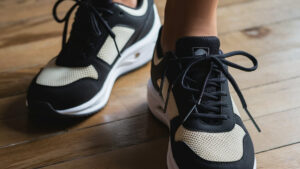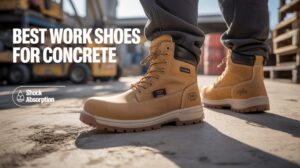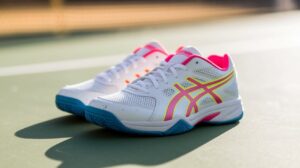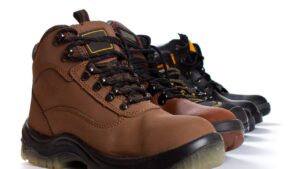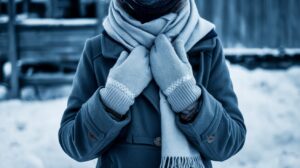Are you wondering if your regular running shoes can keep up when winter arrives? Running in cold, wet, or icy conditions can be tough on your feet—and your shoes.
Choosing the right footwear could make all the difference between a comfortable, safe run and a risky, slippery experience. You’ll discover why winter running shoes might be exactly what you need to stay comfortable, protect yourself, and keep your runs enjoyable no matter how cold it gets.
Don’t let the season stop you—read on to find out how to step up your winter running game.
Winter Running Challenges
Running in winter brings unique challenges that can affect your performance and safety. Cold weather, slippery paths, and shorter daylight hours all change how you run. Understanding these challenges helps you prepare better and choose the right gear.
Cold Weather Effects
Cold air can make breathing harder and muscles stiff. Your body uses more energy to stay warm. This can tire you faster. Frostbite and numbness risk increase without proper protection.
Slippery Surfaces
Ice and snow make roads and trails slick. Slips and falls happen more often. Traction drops, and balance is harder to keep. Shoes with good grip help prevent accidents.
Reduced Daylight
Shorter days mean less light for running. Visibility drops, making it tough to see obstacles. Wearing reflective gear and bright clothes improves safety. Running in the dark needs extra caution.
Key Features Of Winter Running Shoes
Winter running shoes have special features to handle cold and slippery conditions. These shoes protect your feet and help you run safely. Understanding these features helps you choose the right pair.
Insulation And Warmth
Winter running shoes keep your feet warm in cold weather. They use materials that trap heat inside. This stops your feet from getting cold and numb. Proper insulation makes running outside more comfortable.
Water Resistance
Snow and slush can make your feet wet. Water-resistant shoes stop moisture from getting inside. They use special coatings or membranes. This keeps your feet dry and prevents blisters or discomfort.
Enhanced Traction
Ice and snow make surfaces slippery. Winter running shoes have soles with better grip. Deep treads or rubber compounds improve traction. This reduces slipping and helps you stay steady on your feet.
Durability And Support
Winter shoes need to last through tough weather. They have strong materials and extra support. This protects your feet from injuries and makes the shoes last longer. Good support also helps keep your running form steady.
Comparing Winter Shoes To Regular Running Shoes
Running shoes for winter and regular running shoes have clear differences. These differences help runners stay safe and comfortable in cold weather. Understanding these features can help you pick the right shoes for winter runs.
Material Differences
Winter running shoes use thicker and water-resistant materials. These materials keep feet dry from snow and rain. Regular shoes often have mesh to allow airflow. This design works well in warm weather but not in winter. Winter shoes also provide more insulation to keep feet warm.
Weight And Flexibility
Winter shoes tend to be heavier than regular running shoes. The extra weight comes from added layers and insulation. This weight helps protect against cold and wet conditions. Regular running shoes focus on being lightweight for speed. Flexibility in winter shoes is less to provide more support and protection.
Grip And Sole Design
Winter shoes have soles designed for better grip on ice and snow. Their tread patterns are deeper and made from sticky rubber. This helps prevent slipping on slippery surfaces. Regular shoes have smoother soles designed for dry pavement. They may not provide enough traction in winter conditions.
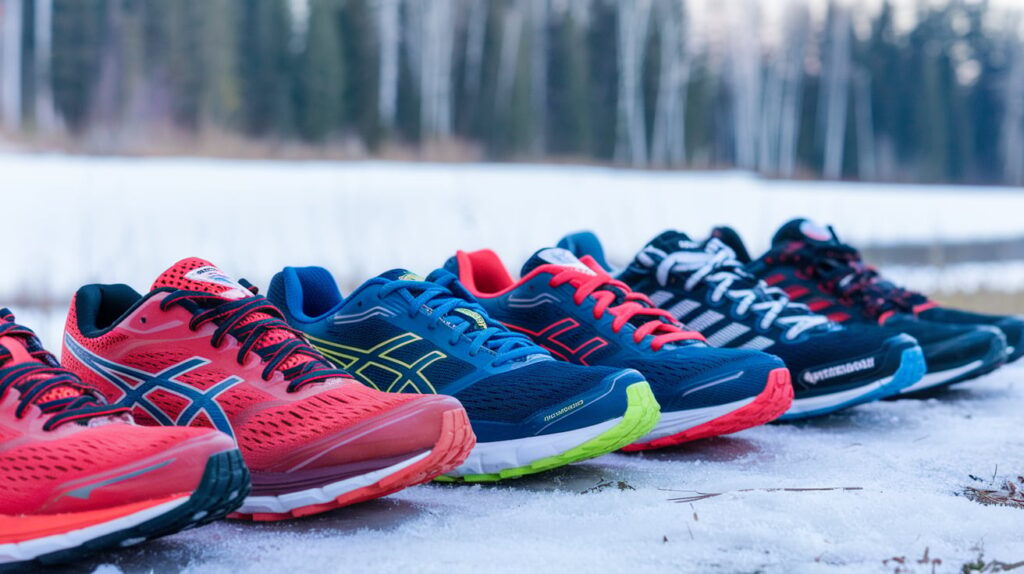
When To Switch To Winter Running Shoes
Knowing when to switch to winter running shoes helps keep your feet safe and comfortable. Winter shoes protect against cold, wet, and slippery conditions. Choosing the right time to change shoes can improve your running experience during colder months.
Temperature Thresholds
Switch to winter running shoes when temperatures drop below 40°F (4°C). Cold weather makes regular shoes less effective at keeping feet warm. Winter shoes have better insulation to fight cold. Running in cold feet can cause discomfort and slow you down.
Weather Conditions
Winter shoes are best for wet, snowy, or icy weather. They have water-resistant materials to keep feet dry. Special soles offer better grip on slippery surfaces. Regular shoes may let water in and increase the risk of slipping.
Running Terrain
Choose winter shoes if you run on trails or uneven paths. Snow and ice make trails slippery and dangerous. Winter shoes provide extra traction and support. For smooth, dry roads, regular shoes may still work well.
Tips For Choosing The Right Winter Running Shoes
Choosing the right running shoes for winter is important for comfort and safety. Cold weather and wet conditions need special shoe features. The right pair helps keep feet warm, dry, and stable on slippery surfaces. Consider these key tips to find the best winter running shoes for your needs.
Sizing For Thick Socks
Winter running often means wearing thick socks. Shoes must have extra room to avoid tightness. A half size larger than usual can help fit thick socks. Make sure toes have space to move. This prevents blisters and keeps blood flowing, helping feet stay warm.
Breathability Considerations
Winter shoes need to keep feet dry inside. Breathable materials stop sweat buildup. Good airflow prevents cold and wet feet. Look for shoes with mesh or special membranes that let air out but keep water in. This balance keeps feet comfortable and dry during runs.
Budget And Brand Options
Winter running shoes come in many price ranges. Set a budget before shopping. Some brands offer durable shoes at lower prices. Others provide high-end features for more cost. Choose shoes that match your needs and wallet. Quality and comfort should guide your choice.
Additional Winter Running Gear
Running in winter demands more than just the right shoes. You need extra gear to stay warm and safe. This gear helps protect your body from cold and harsh weather. Proper gear keeps your runs comfortable and injury-free.
Clothing Layers
Wear multiple thin layers. Start with a moisture-wicking base layer. Add an insulating middle layer for warmth. Finish with a windproof outer layer. Layers trap heat and block cold air. You can remove layers if you get too warm.
Accessories For Safety
Winter days are shorter and darker. Use reflective gear to stay visible. Wear a headlamp or clip-on light. Gloves and hats keep extremities warm. Choose accessories that fit snugly and do not restrict movement.
Foot Care Tips
Cold feet can cause discomfort and frostbite. Wear moisture-wicking socks to keep feet dry. Consider wool or thermal socks for extra warmth. Check your feet after each run for blisters or redness. Dry your shoes and socks after running.
Frequently Asked Questions
Do Winter Running Shoes Differ From Regular Ones?
Winter running shoes offer better insulation, waterproofing, and traction. They protect feet from cold, wet, and slippery conditions. Regular shoes lack these features, making winter shoes essential for safety and comfort during cold months.
Can Regular Running Shoes Work In Winter Conditions?
Regular running shoes may not provide enough warmth or grip in winter. They can let moisture in and cause slipping on ice or snow. Using winter-specific shoes is safer and keeps feet dry and warm.
What Features Should Winter Running Shoes Have?
Look for waterproof materials, thermal insulation, and rugged soles. Good traction is crucial to prevent slipping on icy surfaces. Additionally, winter shoes often have reflective elements for low-light safety.
How To Maintain Running Shoes During Winter?
Clean off salt and mud after runs to prevent damage. Dry shoes naturally, away from direct heat. Regularly check soles for wear to maintain grip and replace shoes when necessary.
Conclusion
Choosing the right running shoes for winter matters a lot. Cold, wet, and slippery conditions need special care. Shoes with good grip and water resistance keep you safe. Warmth and comfort help you enjoy your runs more. Regular shoes might not protect you well in winter.
Think about your usual running spots and weather. Investing in winter shoes can prevent injuries and cold feet. Stay active and comfortable no matter the season. Your feet will thank you for the extra care. Ready to run through winter?
